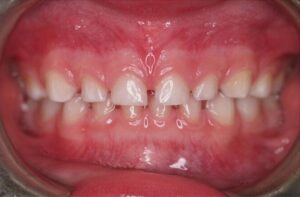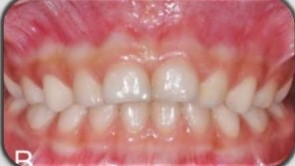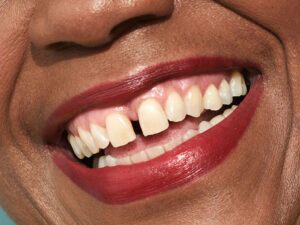May 14th, 2021
Is your child in the stage where they are starting to drool a lot, they have the urge to bite everything, and you are starting to see little teeth come in? It's an exciting time! - your child is teething! We know teething can be extremely difficult and uncomfortable for some children, and it becomes a difficult time for the parents as well. Because we know how hard it is, here are some tips to help you and your family get through the teething process:
- Frozen towels - Wet a soft towel and place it into your freezer until the towel is cold but NOT frozen or hard. This is the safest and best option to have your child chew on! The towel is soft so that there is no harm to your child's mouth and the cold will help relieve their discomfort!
- Soft teething toys - Any teething toy that is soft in nature is great, such as the toys that you can throw into the freezer. Any toy works as long as it is soft. You want to avoid any hard plastic toys because they can easily break off and create a choking hazard for your child.
- Avoid teething medications - You want to avoid giving your child medications that are specifically for teething. The medications made for teething may not be at a healthy and safe level for your child. Avoid especially any topical ointments with anesthetic since it may not be safe for your child, such as Orajel. If needed, you can give your child Children's Tylenol to help with any fevers that come with teething.
Your dental family is always here to support you with any questions you may need! If you have any questions, please don't hesitate to ask!
April 19th, 2021
We all know the golden rule for brushing - brush two times a day, two minutes each time. But how can we make brushing fun for kids? We get this question a lot from parents since it is so hard to get their kids motivated to brush. There are many ways to get your kids brushing, but here are a few of our favorites!
- Brushing Tunes! - Have your child choose their favorite song and have them brush for the full amount of time that the song plays for. Because we want your child to brush for at least 2 minutes, make sure the song lasts for that amount of time!
- Brushing Sticker Chart - Create a calendar where you reward your child with a sticker for every morning and every night that they brush their teeth. At the end of the month, if they were able to get a full chart of stickers, you can reward them with a prize of your choice!
- Brushing Together - Some children, especially the younger ones, love watching and copying what their parents do. If you brush together, it becomes a family activity that they'll get used to doing.
The biggest thing about brushing habits is creating a routine. Our favorite routine is brush, book, bed - the three B's! Brush your teeth, settle down with a bedtime story/book, and then get tucked into bed.
We hope these tips help you and your family - let us know what works for you! And please share with us any other great ideas your family has to make brushing fun!
February 19th, 2021
In honor of National Children's Dental Health Month, we wanted to talk about a really important topic to us. We often hear "but they're just baby teeth, do they really need to be fixed? Aren't they going to fall out anyways?" Although it is true that baby teeth do fall out and new adult teeth come in, not treating baby teeth can cause a lot more harm than we think!
What happens when we don't treat cavities in baby teeth?
- Cavities can grow really big and affect the nerve inside the tooth. When this happens, your child may start feeling discomfort and pain on that tooth. This pain affects children when they're eating and sometimes even at night when they're trying to sleep.
- After cavities start affecting the nerve of a tooth, the bacteria from the cavity may start causing an infection to form inside the bone underneath the tooth. You may see a pimple with pus on your child's gums next to the tooth with the cavity.
- If infections are left untreated, this can be really painful and potentially dangerous for your child. Infections can cause large swellings in the face and neck, and if the swellings are large enough, it can cause your child to have difficulty breathing. This becomes a really urgent emergency!
- Over time, if the infections stay in the bone around the tooth, this infection may affect the adult teeth that are developing underneath. The adult teeth may not develop normally - they sometimes become a different shape or a different color from what is normal.
- And lastly, not all baby teeth fall out at once! Most children do not lose their last baby tooth until they are 12 years old!
All of these things that can cause discomfort for your child are extremely preventable! When we treat baby teeth, we try to treat them as early as possible so that we take care of the cavities when they are still small. Our goal is to protect and save as many baby teeth as we can, because we want every child to have a beautiful and healthy smile!
January 25th, 2021
A very common question we get from parents is: "Why are there so many gaps in between my child's teeth?" This question is usually followed by: "Does this mean my child needs braces?"
We've all been taught that straight teeth are what teeth are supposed to look like. But for baby teeth, those gaps or spaces are what we want! Baby teeth are very small in size in comparison to the adult teeth counterparts. By having gaps in between each baby teeth, the extra space allows for the larger adult tooth to erupt into its normal place.
Dentists describe spacing via the Baume classification system.
- Baume Type 1 means that there are gaps/spacing between the baby teeth, allowing room for the adult teeth to come in.

- Baume Type 2 means that the baby teeth are in contact or touching. There is a lack of extra space, meaning that the adult teeth may not have enough room to come in, leading to crowding and possible need for braces for the child in the future!

Once adult teeth erupt into place, they are usually in contact with one another, no gaps remaining. But not all gaps are bad! Some people have natural gaps in between their adult teeth and that's okay! Every smile is a beautiful smile!





